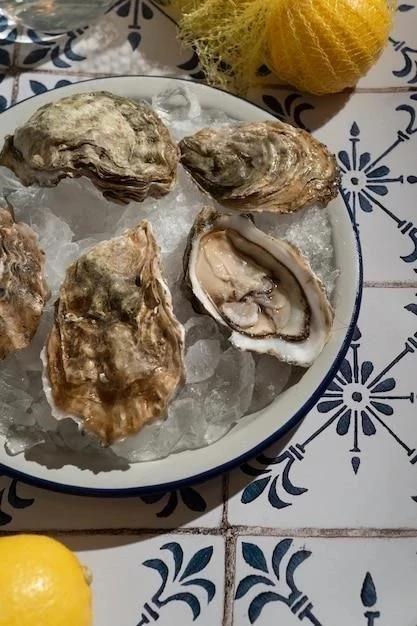
Sfincione, a thick and flavorful Sicilian pizza, stands as a testament to the region’s rich culinary heritage․ This iconic baked good, deeply rooted in the food history of Palermo, offers a unique twist on the traditional pizza concept․ While Neapolitan pizza reigns supreme in the global culinary landscape, Sfincione deserves recognition as a distinct and equally captivating pizza variation․
A Journey Through the History of Sfincione
The origins of Sfincione can be traced back to the 16th century, a time when Palermo was a bustling hub of trade and cultural exchange․ The dish’s name, derived from the Sicilian dialect word “sfinciuni,” meaning “sponge,” aptly describes its soft and spongy texture․ While its exact origins remain shrouded in mystery, some food historians suggest that Sfincione may have evolved from a type of focaccia, a flatbread common in Sicilian cuisine․
A Symphony of Flavors⁚ The Ingredients of Sfincione
Sfincione’s appeal lies in its harmonious blend of flavors and textures․ The base, a thick and airy bread dough, serves as a canvas for a symphony of toppings․ A generous layer of tomato sauce, often seasoned with oregano and a touch of sugar, provides a sweet and savory foundation․ The star of the show, however, is the ricotta cheese, which adds a creamy richness that contrasts beautifully with the tangy tomato sauce․
Other traditional toppings include⁚
- Caciocavallo⁚ A semi-hard, slightly salty cheese, often grated over the ricotta․
- Anchovies⁚ Adding a salty and umami depth to the overall flavor profile․
- Onions⁚ Caramelized onions provide a sweet and savory counterpoint to the other ingredients․
- Olive Oil⁚ A drizzle of extra virgin olive oil adds a touch of richness and aroma․
The Art of Making Sfincione⁚ A Traditional Recipe
The process of creating Sfincione is a labor of love, reflecting the dedication to culinary tradition that defines Sicilian cuisine․ Here’s a traditional recipe, passed down through generations, for this iconic dish⁚
Ingredients⁚
- Dough⁚
- 500g strong bread flour
- 25g fresh yeast
- 300ml lukewarm water
- 1 tbsp olive oil
- 1 tsp salt
- Tomato Sauce⁚
- 1 kg ripe tomatoes
- 1 onion, finely chopped
- 2 cloves garlic, minced
- 1 tbsp olive oil
- 1 tsp oregano
- Salt and pepper to taste
- 1 tbsp sugar
- Toppings⁚
- 250g ricotta cheese
- 100g caciocavallo cheese, grated
- 5 anchovies, chopped
- 1 onion, thinly sliced and caramelized
- Olive oil for drizzling
Instructions⁚
- Prepare the Dough⁚ Dissolve the yeast in lukewarm water, then add the olive oil, salt, and flour․ Knead the dough for 10 minutes until smooth and elastic․ Place in a greased bowl, cover with a damp cloth, and let rise in a warm place for 1 hour․
- Make the Tomato Sauce⁚ Blanch the tomatoes, peel, and remove the seeds․ Sauté the onion and garlic in olive oil until softened․ Add the tomatoes, oregano, salt, pepper, and sugar․ Simmer for 30 minutes, stirring occasionally, until the sauce thickens․
- Assemble the Sfincione⁚ Preheat the oven to 200°C (400°F)․ Roll out the dough to a 12-inch round and place it on a baking sheet․ Spread the tomato sauce over the dough, leaving a 1-inch border․ Top with the ricotta cheese, caciocavallo cheese, anchovies, and caramelized onions․ Drizzle with olive oil․
- Bake⁚ Bake for 20-25 minutes, or until the crust is golden brown and the cheese is melted and bubbly․ Let cool slightly before slicing and serving․
Sfincione⁚ A Culinary Treasure of Sicily
Sfincione is more than just a pizza; it is a symbol of Sicilian culinary heritage․ Its unique flavor profile, the result of a harmonious blend of sweet, savory, and salty notes, has captivated generations of Sicilians․ Whether enjoyed as a street food snack or a centerpiece of a family meal, Sfincione remains a beloved culinary treasure, capturing the essence of Sicilian food culture․

Autor artykułu w sposób jasny i zwięzły przedstawia historię i charakterystykę sfincione, podkreślając jego unikatowe cechy. Szczególnie interesujące są informacje o pochodzeniu nazwy i wpływie tradycji kulinarnej Palermo na powstanie tego dania. Dodatkowym atutem jest szczegółowy opis składników i ich roli w tworzeniu smaku sfincione, co pozwala czytelnikowi lepiej zrozumieć jego specyfikę.
Autor artykułu w sposób profesjonalny i zwięzły przedstawia historię i charakterystykę sfincione, podkreślając jego unikatowe cechy i odrębność od tradycyjnej pizzy. Szczególnie cenne są informacje o składnikach i ich roli w tworzeniu smaku sfincione, co pozwala czytelnikowi lepiej zrozumieć jego specyfikę.
Artykuł stanowi wartościowe źródło informacji o sfincione, ukazując jego bogactwo smakowe i historyczne znaczenie. Autor w sposób przystępny i zwięzły przedstawia historię tego dania, podkreślając jego wyjątkowość w kontekście tradycji kulinarnej Sycylii. Szczegółowy opis składników i procesu przygotowania sfincione pozwala czytelnikowi lepiej zrozumieć jego specyfikę i zachęca do spróbowania tego specjału.
Artykuł stanowi doskonałe wprowadzenie do świata sfincione, podkreślając jego wyjątkowość i odrębność od tradycyjnej pizzy neapolitańskiej. Szczególnie cenne są informacje historyczne, które dodają głębi i kontekstu do opisu tego specjału. Autor precyzyjnie przedstawia składniki i ich rolę w tworzeniu harmonijnego smaku sfincione, a także opisuje proces jego przygotowania, podkreślając tradycyjny charakter tego dania.
Artykuł stanowi doskonałe wprowadzenie do tematu sfincione, ukazując jego bogactwo smakowe i historyczne znaczenie. Autor w sposób przystępny i zwięzły przedstawia historię tego dania, podkreślając jego wyjątkowość w kontekście tradycji kulinarnej Sycylii. Szczegółowy opis składników i procesu przygotowania sfincione pozwala czytelnikowi lepiej zrozumieć jego specyfikę i zachęca do spróbowania tego specjału.